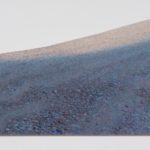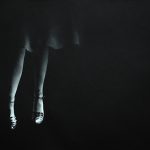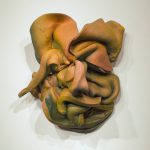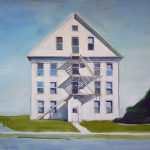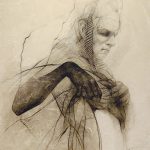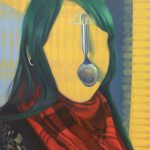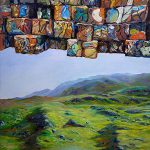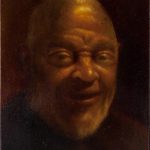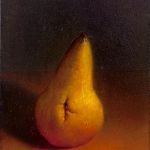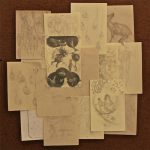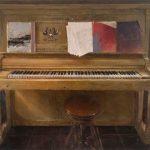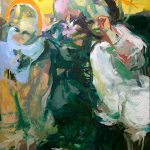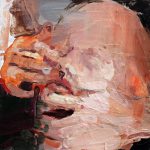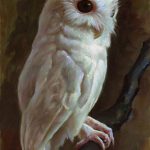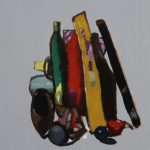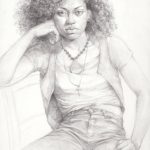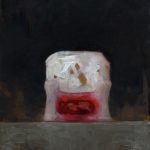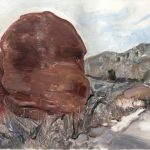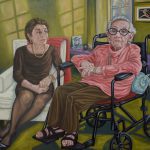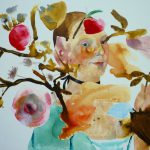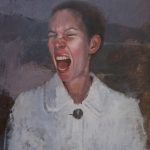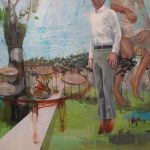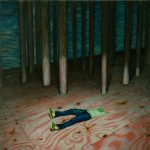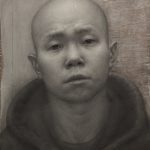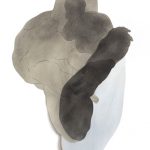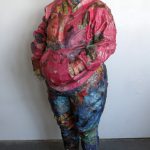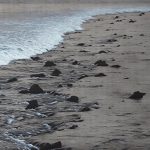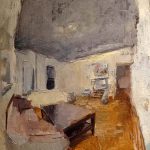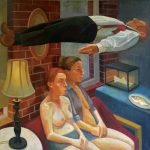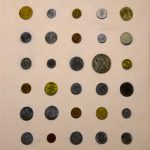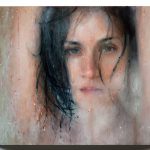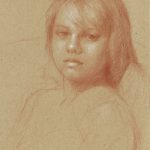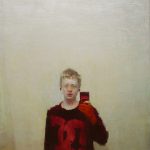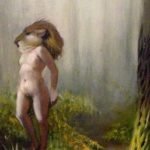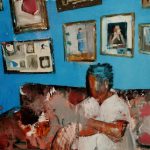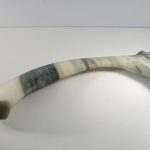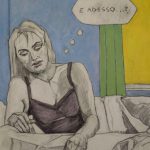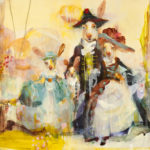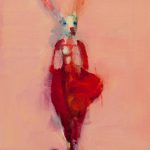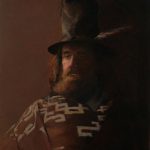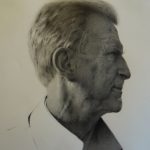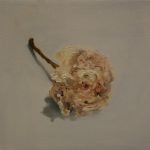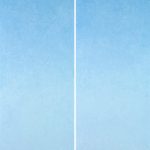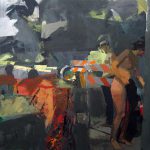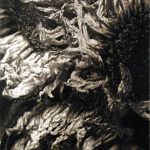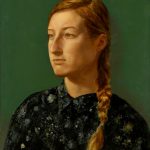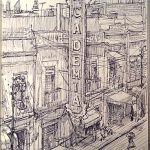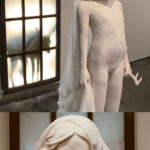2014 Summer Exhibition
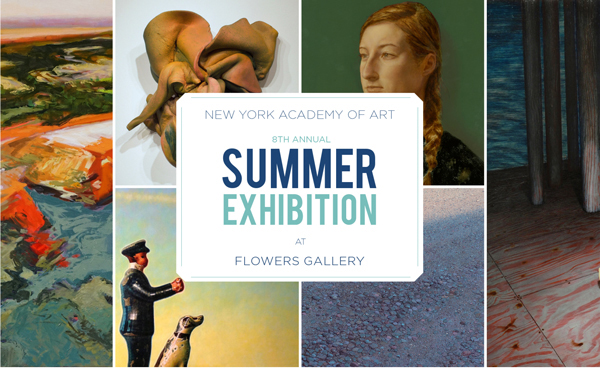
CURATED BY
MATTHEW FLOWERS, Flowers Gallery
LAURA HOPTMAN, Museum of Modern Art
PATTERSON SIMS, Independent Curators International
Artwork above by:
Alfonso Gosalbez, Cori Beardsley, Shangkhai Kevin Yu, John Jacobsmeyer, Peter Drake and Emily Adams
- Emily Davis Adams (MFA 2011, Fellow 2012)
- James Adelman (MFA 2014)
- Craig Banholzer (MFA 2003)
- Corinne Beardsley (MFA 2011)
- Carrie Bobo (MFA 2009)
- Ilsa Brittain (MFA 2014)
- Dina Brodsky (MFA 2006)
- Dina Brodsky (MFA 2006)
- Alicia Brown (MFA 2014)
- Zach Brown (MFA 2013)
- Thomas John Carlson (MFA 2006, Fellow 2007)
- Miguel Carter-Fisher (MFA 2012)
- Miguel Carter-Fisher (MFA 2012)
- Jeffrey Casto (MFA 2004)
- Aleah Chapin (MFA 2012, Fellow 2013)
- John Coburn (MFA 1997)
- Garrett Cook (MFA 2014)
- Garrett Cook (MFA 2014)
-
Adam Cross
MFA 2014
- Peter Drake (Dean of Academic Affairs
- Heidi Elbers (MFA 2010)
- Samuel Evensen (MFA 2006, Faculty)
- Megan Ewert (MFA 2013)
- Shauna Finn (MFA 2005)
- Steve Forster (MFA 2010)
- Meg Franklin (MFA 2013)
- Elizabeth Glaessner (MFA 2013, Fellow 2014
- Alfonso Gosalbez (MFA 2014)
- Ava Harel (MFA 2007)
- Ava Harel (MFA 2007)
- Jacob Hayes (MFA 2014)
- Erinn Heilman (MFA 2015)
- Ivy Hickam (MFA 2013)
- Madeleine Hines (MFA 2014)
-
Patty Horing
MFA 2015
- Holly Hudson (MFA 2010)
- Daniel Hughes (MFA 1995)
- Caitlin Hurd (MFA 2006)
- John Jacobsmeyer (Faculty)
- Yunsung Jang (MFA 2013, Fellow 2014)
- Christian Johnson (MFA 2001)
- William Kurtz (MFA 2009, Fellow 2010, Faculty)
- Lisa Lebofsky (MFA 2006)
- James Linkous (MFA 2013)
- Lisa Manley (MFA 2013)
- Lisa Manley (MFA 2013)
- Benjamin C. Martins (MFA 2011)
- Ayumi Matsuba (MFA 2010)
- Curtis Mcdowell (MFA 2009)
- Ge Mei (MFA 2014)
- Elizabeth Misitano (MFA 2011)
- Alyssa Monks (MFA 2001)
- Livia Mosanu (MFA 2015)
- Mark Paczkowski (MFA 2013)
- Eric Pedersen (MFA 2015)
- Eric Pedersen (MFA 2015)
- Laura Peturson (MFA 2005)
- Elena Rodz (MFA 2011)
- Nicolas V. Sanchez (MFA 2013, Fellow 2014)
- Stephen Shaheen (MFA 2005)
- Alissa Siegal (MFA 1993)
- Susan Siegal (MFA 2010)
- Susan Siegal (MFA 2010)
- Robert Silverman (MFA 2006)
- Jesse Stern (MFA 2012)
- Helen Strickler (MFA 2014)
- Daisuke Takeya (MFA 1995)
- Tim Tozer (MFA 1996)
- Tyler Vouros (MFA 2011)
- Shangkai Kevin Yu (MFA 2014, Fellow 2015)
Painting, Laughter and an Eagerness to Adapt
Our guide, Wang Yi, is a joy to get to know. We visited his studio last week. His paintings blew us away, reminding us of Michael Borremans and Adrian Ghenie. He took us to an art fair, the YUZ Museum, and his friend’s gallery called Ming Gallery, where his work is currently showing. We’ve been learning about the art market in China and how the collectors only buy old art that has already proven its value. People buy contemporary art for lower prices, not as investments, but for the purpose of decorating their homes. Also, there isn’t much of a market for international art yet. People here buy art that they are familiar with and are less likely to branch out into purchasing more conceptually based artwork.
The food here is a highlight. Our routine late dinners on the street excite us most. We walk across the campus along the dimly lit, tree-lined road, past the coy pond, through the finely mowed field, over the river bridge to a bustling outdoor array of food vendors. Dozens of venders grill and serve food on sticks. We enjoy trying new things and often order more than enough. We find amusement in each other’s eating habits and trying to communicate with the vendors for Arc and Dana to avoid pork, and nothing spicy for Dana, and “is there pork in the sauce?” or “what’s the little speck of meat on the broccoli?” Ryan will eat anything! He enjoys spice to the point of severe pain, and if we can’t finish something or don’t like it, we pawn it off onto him. It’s quite hysterical.
Along with our infrequent showers, we have become comfortable with a less sanitary lifestyle. Arc and I discovered our go-to lunch spot where we find the best kung pow chicken. Yesterday, while eating the dish, I found a little cockroach on my chopstick. Arc and I looked at each other, he wrapped the little guy up in a napkin, and we continued eating—enjoying it just the same. That evening, Ryan was sipping on his tea and reached in his mouth to remove a little long-horn beetle. We gathered around inspecting the beetle as Ryan continued enjoying his tea. None of us have gotten sick yet. We find laughter through our journey of learning a new perspective.
So far, our experience in Shanghai has been fulfilling—full of painting and laughter and an eagerness to adapt and to learn from each other.
Artist-in-Residence Programs at Carrara & Mexico

Artist in Residence Program in CARRARA
During the summer of 2013 Heather Personett (MFA 2014) and Zoë Suenson-Taylor (MFA 2013) participated in the Carrara Merit Award Artist-in-Residence Program located in Carrara, Italy. The Carrara Merit Award Residency has been made possible by ABC STONE and the Oriano Galloni Foundation, with support from ABC Stone founder Jonathan Tibett and artists Oriano Galloni and Stephen Shaheen.
Artist in Residence Program in MEXICO
Garrett Cook (MFA 2014) and Guno Park (MFA 2011) participated in the Belle Artes Residency Artist-in-Residence Program in Mexico City, Mexico in the summers of 2013 and 2011. The Bellas Artes Residency is made possible by the generous support of Stephen Henderson and James LaForce.
- Guno Park (MFA 2011)
- Guno Park (MFA 2011)
- Guno Park (MFA 2011)
- Guno Park (MFA 2011)
- Guno Park (MFA 2011)
- Heather Personett (MFA 2014)
GREETINGS FROM SHANGHAI
 It seemed to take quite a while for us to get here. Time appeared to drag on between May 17th, the last day of school, to May 26th, our departure date. When May 26th finally arrived, I wasn’t sure how to feel. Many of my fellow travelers were also unsure. On one hand, we were happy and excited to go to China–amazed and honored to be selected for this once in a lifetime opportunity. But for some reason, however small, however stupid, there was some doubt. You feel you don’t want to go, or maybe you shouldn’t. This feeling arose in us for many reasons. Let me explain– It could be because we were scared of change, knowing once we get back to New York there’s only one year left of grad school, and realizing how quickly that too, will go. Maybe we were not willing to leave loved ones behind, or maybe it was a fear of failing or disappointing people with what we chose to paint. Somehow after achieving a residency we still felt maybe we weren’t good enough.
It seemed to take quite a while for us to get here. Time appeared to drag on between May 17th, the last day of school, to May 26th, our departure date. When May 26th finally arrived, I wasn’t sure how to feel. Many of my fellow travelers were also unsure. On one hand, we were happy and excited to go to China–amazed and honored to be selected for this once in a lifetime opportunity. But for some reason, however small, however stupid, there was some doubt. You feel you don’t want to go, or maybe you shouldn’t. This feeling arose in us for many reasons. Let me explain– It could be because we were scared of change, knowing once we get back to New York there’s only one year left of grad school, and realizing how quickly that too, will go. Maybe we were not willing to leave loved ones behind, or maybe it was a fear of failing or disappointing people with what we chose to paint. Somehow after achieving a residency we still felt maybe we weren’t good enough.  The plane was so quiet as we took off. Everything fell into a silence as I looked around at my fellow classmates and new friends. I was amazed and in awe to be there, sitting with them getting ready to fly to China. Everything was still, and I finally started to calm down after the slow weeks of build-up. The anxiety and nerves that I had from the previous week settled. I started to understand all these feelings I was having. The good and the bad feelings all became beautiful, a feeling that meant we were alive and human, living in moment. I was finally getting back to myself, feeling normal, relaxed, calm, and ready to begin my journey with them.
The plane was so quiet as we took off. Everything fell into a silence as I looked around at my fellow classmates and new friends. I was amazed and in awe to be there, sitting with them getting ready to fly to China. Everything was still, and I finally started to calm down after the slow weeks of build-up. The anxiety and nerves that I had from the previous week settled. I started to understand all these feelings I was having. The good and the bad feelings all became beautiful, a feeling that meant we were alive and human, living in moment. I was finally getting back to myself, feeling normal, relaxed, calm, and ready to begin my journey with them.
 Since we arrived in China, time has flown by. I can’t believe we’ve already been here for a week. Since meeting Wang Yi for the first time, we’re already comfortable in his studio, looking, hanging out and talking about art. A lot of things are different here but somehow seem strangely familiar especially the part that includes Jack Daniels.
Since we arrived in China, time has flown by. I can’t believe we’ve already been here for a week. Since meeting Wang Yi for the first time, we’re already comfortable in his studio, looking, hanging out and talking about art. A lot of things are different here but somehow seem strangely familiar especially the part that includes Jack Daniels.  We have been to some galleries and art fairs but most of all have been making lots of work. It’s been so much fun I can’t wait to see what is in store for next week.
We have been to some galleries and art fairs but most of all have been making lots of work. It’s been so much fun I can’t wait to see what is in store for next week. On May 26, four Academy students departed New York for a six-week residency in Shanghai. Tamalin Baumgarten, Dana Kotler, Arcmanoro Niles, and Ryan Schroeder (all members of the MFA class of 2015) will share their experiences here throughout the summer.
Studio Portraits: Joshua J. Gale (MFA 2014)
“THERE’S TIMES OF GATHERING AND TIMES OF CREATION: AN EDUCATION OF BEAUTY, WHAT A RARE THING!”

Because this kind of study switches something on inside of you that cannot be switched off. You begin to rotate objects in space in your head, the most advanced kind of computer program is in there now. You begin to see patterns of light and shade. You begin to see structure and meaning. And in this concentrated seeing, you join a great sisterhood and a great brotherhood of people through thousands of years of history who tried to see in this exact same way. You join the prehistoric genius drawing fluid bulls in the caves of Lascaux. You join Dürer, training his super high-def renaissance eye on a tuft of meadow. You join Alice Neel mixing blue and magenta and yellow tints to render the drum tight skin of a woman’s late term belly. This is a really great club to get into and you’re in. You know the doorman now.
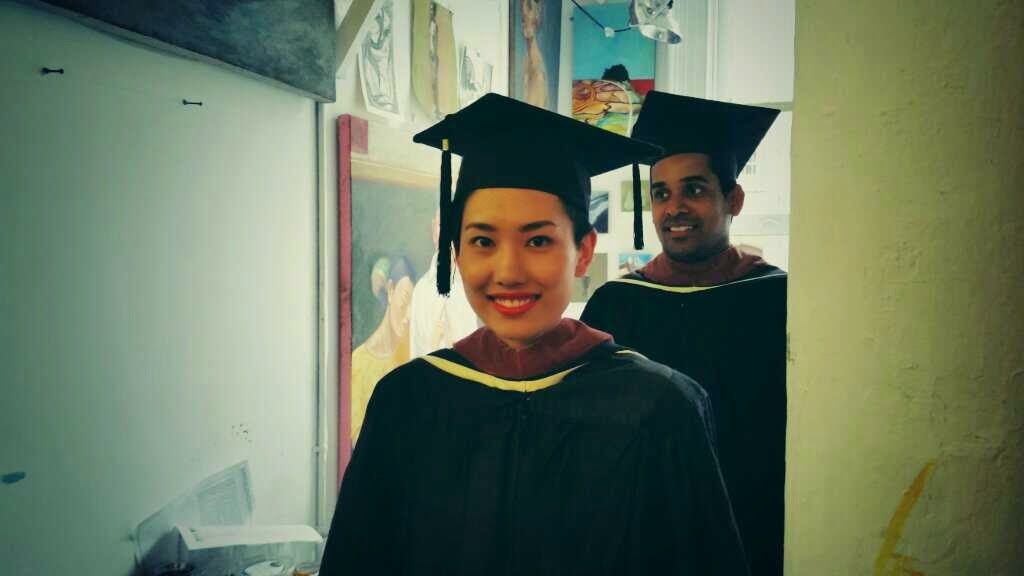 It’s not the same thing as fun. People get killed playing– skateboarders, boxers, skiers. People get killed playing, it’s serious business. So it’s life or death this kind of play I’m talking about. And it can get frustrating. And it can seem futile, effort can get washed away with the tides and yet this is the ideal place to be as an artist, in this playful space.
It’s not the same thing as fun. People get killed playing– skateboarders, boxers, skiers. People get killed playing, it’s serious business. So it’s life or death this kind of play I’m talking about. And it can get frustrating. And it can seem futile, effort can get washed away with the tides and yet this is the ideal place to be as an artist, in this playful space.
This aspect of play in the studio is what makes great art. Sandcastles, tree houses, homemade Halloween costumes, serious beautiful childlike play. This is the energy you need to bring to everything you do as an artist. So you go in the studio and you get playful. Highs stakes, life or death, playful. Playful like Picasso, playful like Lina Wertmüller, playful like Andy Warhol, playful like Louise Bourgeois.
So now I named a few artists and since you’re young artists you can start beating up on yourselves. That’s what you’re going to do. I just mentioned great artists and what comes to mind when I mention such artists is work of the highest master. And when we look at such work, it is easy to beat up on ourselves. We’re young artists, we’re students, we’re particularly good at beating up on ourselves for not creating masterpieces right away. But that is not your job quite yet. This is a time of gathering. You’re gathering ingredients. I want you to think of this time as the time at a farmers market.


And this is your job. Cook it all up later and then you know. You’ll follow the recipes for a bit, but you don’t need to write your own recipes for a while. There is time for all that. Life is long.
But this advice to slow down and enjoy the gathering time is not to diminish the urgency of what can be done with your gifts. The education that you have begun, this intense seeing, this mastery of these ancient mediums, this humanistic study of nature, this process of gathering, this education of beauty, what a rare thing in today’s world.
 And this education you have begun connects you to all that. Yours is a school that a renaissance master would recognize. He’d see the casts, the skeletons. He’d smell the paint, he’d see the posing nudes. We need this beauty so desperately. And we need you to make things for us. We need more eyes that have followed the swooping curves of the human skull. We need more hands that have pushed and pulled clay until it looks like and feels like human muscle. We need more minds that have puzzled out the mixing of paint into the myriad tints of human skin. Because this is an education in magnificent beauty. This is an education in the perfection of design. This is an education in visual ravishment. I can only hope that when you go out there some of it rubs off.
And this education you have begun connects you to all that. Yours is a school that a renaissance master would recognize. He’d see the casts, the skeletons. He’d smell the paint, he’d see the posing nudes. We need this beauty so desperately. And we need you to make things for us. We need more eyes that have followed the swooping curves of the human skull. We need more hands that have pushed and pulled clay until it looks like and feels like human muscle. We need more minds that have puzzled out the mixing of paint into the myriad tints of human skin. Because this is an education in magnificent beauty. This is an education in the perfection of design. This is an education in visual ravishment. I can only hope that when you go out there some of it rubs off.
